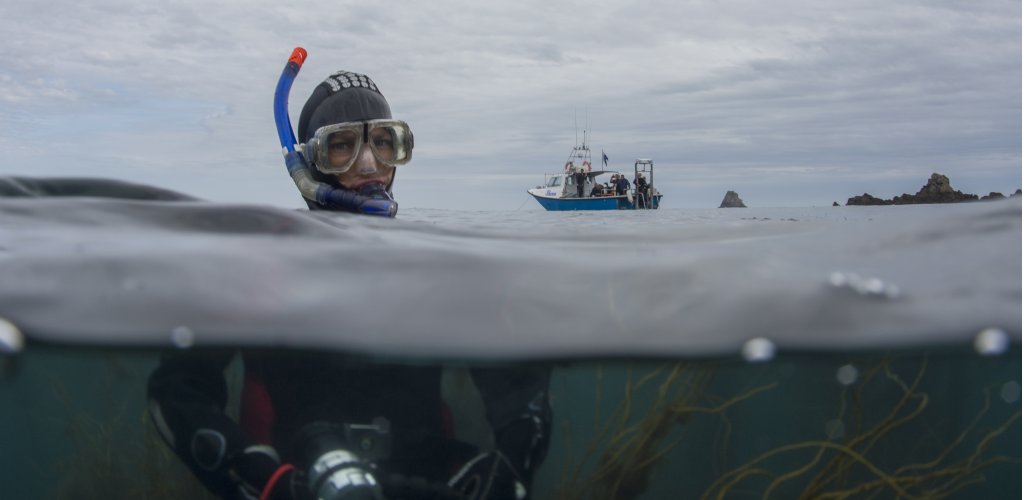
How to stay safe when snorkelling in cold conditions.
This time of year, the visibility underwater can be great - the major downside is the water is cold. Inland waters such as lakes, managed sites, and sea lochs can be very cold – below 10ºC, sheltered coastal locations can be slightly ‘warmer’ and have very calm days. So perhaps a short but invigorating snorkel dive could be an option.
With the combination of low air temperatures and cold water, snorkelling at this time of year is a serious undertaking which is possible but needs a lot of thought and planning.
The snorkellers themselves need to be fit and robust and I would suggest that this is an ‘adults only’ activity. A good well-fitting thick wetsuit or semi-drysuit, as well as suitable hoods and gloves, are essential. I have tried snorkelling in a drysuit – let’s just say my finning action was not effective – some may have success so using a drysuit is an option to consider.
Choosing the dive location needs care if coastal, tides must be favourable. Inland or coastal the weather is important, good calm conditions with some sunshine is preferable, easy access in and out of the water is essential – the last thing any of us want to do is struggle when cold. Sheltered or inside changing facilities will be required and well-equipped shore support. Getting into wetsuits should be left until just before for the snorkellers are to go into the water and the changing back into warm, dry clothing is a priority after the dive as well as being supplied with a warm drink. Maybe our young snorkellers, with suitable adult supervision can be part of the shore party.
Marg Baldwin, Snorkel Instructor Trainer
Where to go
A known location – where you are familiar with the facilities which may be available - is strongly advised. If possible a coastal location so the water is not too cold. Beware inland freshwater lakes, their water temperature can be as low as 5ºC and still dropping late February / March depending on the weather conditions we experience. Do not go snorkelling under ice.
Pre-dive planning
Remind participants about hypothermia - a review of the relevant section in the Snorkel Diver Course manual is a starting point. This could lead on to discussions about the qualities and thicknesses of wetsuits / semi-drysuits. Checking the condition and fit of suits as well as hoods and gloves is a must as part of the pre-dive planning and preparation. Only well fitting, good condition suitably thick suit, perhaps a 5mm main suit with a ‘shortie’ over the top giving 10mm of neoprene around the main body should be used together with thick well-fitting hood and gloves.
Dive plan
Plan a short dive and a route where you can keep steadily moving and all should be briefed to indicate if they are started to feel cold and need to terminate the dive.
Shore cover
A competent Snorkel Dive Manager is a must. Someone who knows the site, your dive plan and who knows what to do should something go awry. Establish a Dive Managers ‘station’ so the Dive Manager can see the snorkellers yet shelter is close by where the ‘Dry Robes’/towels/blankets can be immediately available as well warm drinks. The shore cover should be ready to assist the snorkellers to change back into warm dry clothing.
Should you venture out on a cold water snorkelling trip do share your experiences with us.
Think SAFE – Snorkel SAFE
Jim Watson, BSAC Safety and Development manager

 Author: Marg Baldwin | Posted 01 Feb 2017
Author: Marg Baldwin | Posted 01 Feb 2017


